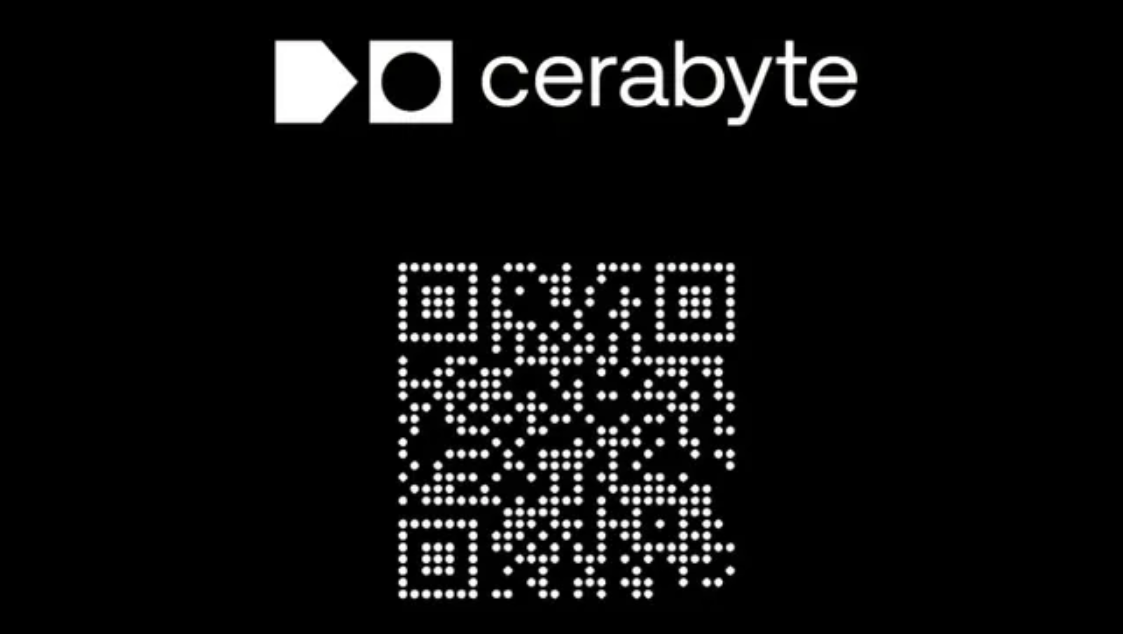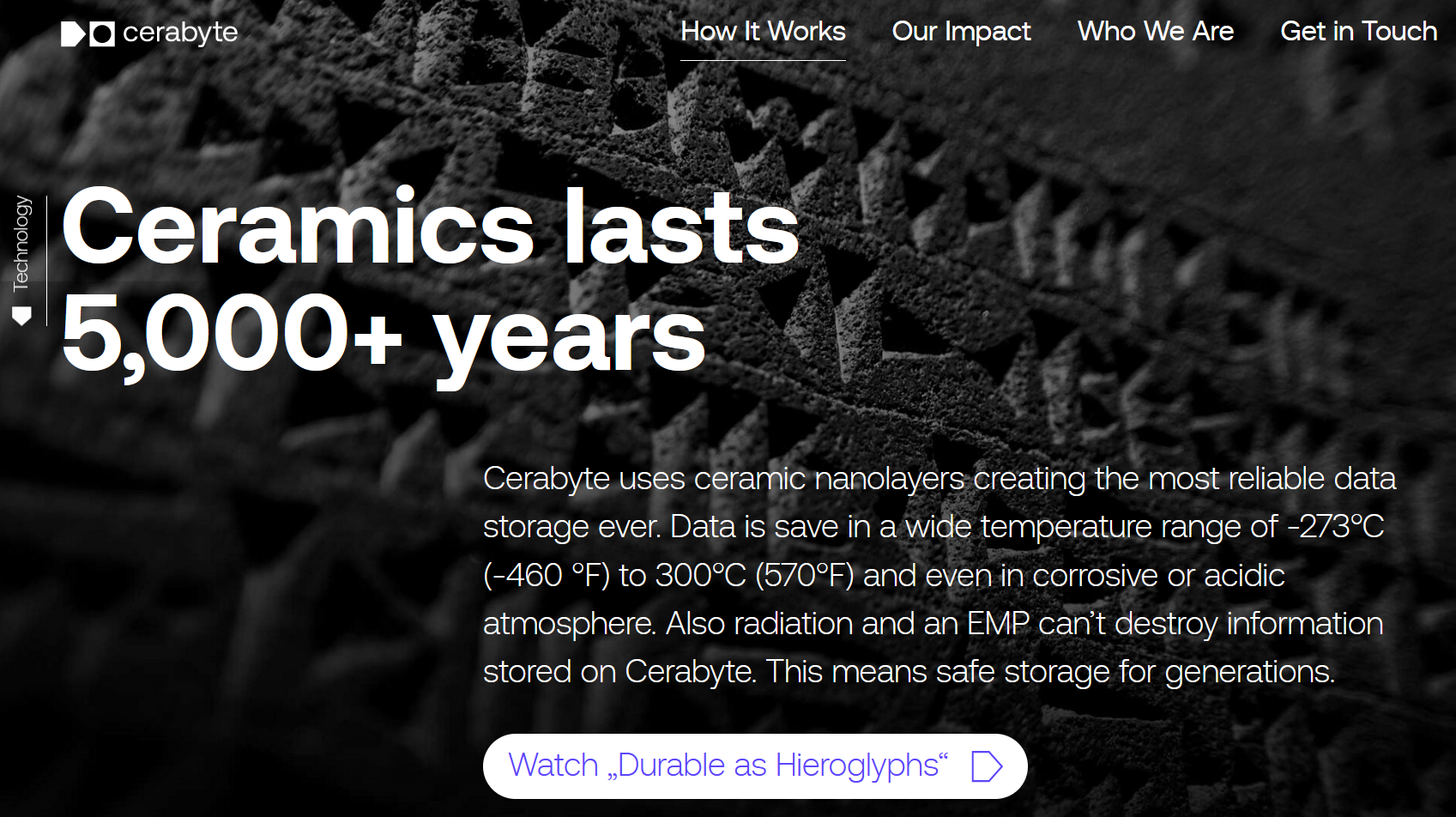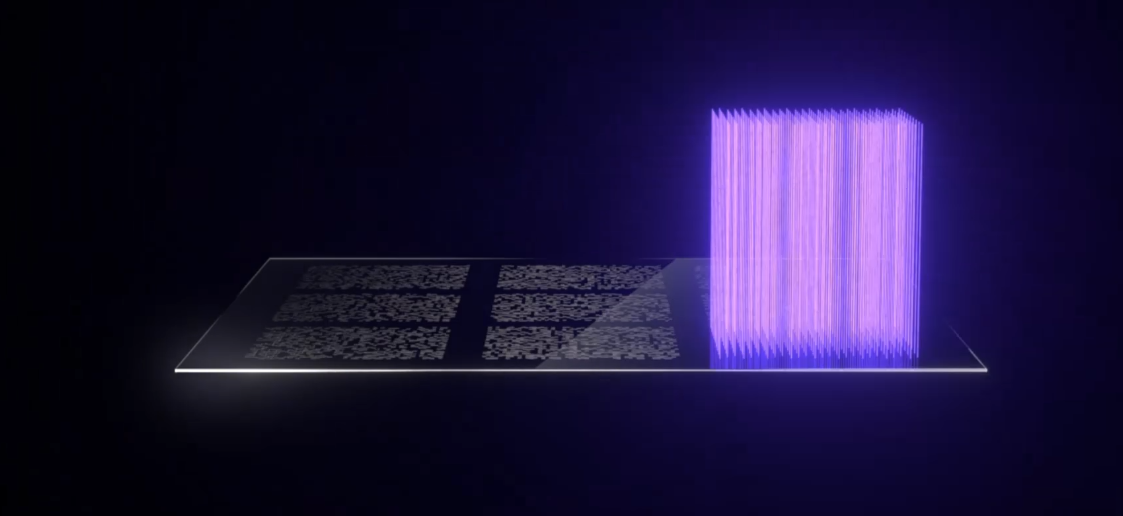New tech laser-etches QR codes onto ceramic-coated glass to store data for 5000 years — new working demo system unveiled
Lasers, glass, and QR codes. What's not to like?

German startup Cerabyte is working on a new storage tech that etches QR codes with lasters onto a new storage medium made out of ceramic nanolayers a mere 50-100 atoms thick coated onto a glass sheet, a new technique that could revolutionize the long-term storage industry and provide unheard of storage densities with CeraMemory cartridges (2025-30) storing between 10 PB and 100 PB, and the CeraTape (2030-35) holding up to 1 Exabyte of capacity per tape. The company also claims the new storage can hold data for 5,000 years at temperatures up to 570 degrees Fahrenheit. Now, the company has debuted a new demo system that shows the tech in action.
Cerabyte's new storage tech is claimed to be completely resistant to fires, floods, electrical surges, drastic drops in temperature, and other environmental threats, which could make it the ideal long-term storage solution in the future.
The storage solution is made with a ceramic-based technology that utilizes inorganic nanoceramic glass layers that are 50 to 100 atoms thick. Data is stored in QR code-like det are etched into the glass layers with laser pulses. The laser pokes holes into each layer, with the holes representing binary zeros, while the rest of the glass that has not been manipulated represents ones.
The storage-focused startup showed a working prototype of its ceramic storage system built with off-the-shelf parts. The video shows the system working as previously envisioned, with a set of library racks accompanied by a single read-write rack for storage accessibility. During the accessibility phase, a cartridge is brought out of the library rack via robots and transferred to a platform or stage in the read-write rack. Once there, the stage moves forward or backward in front of a laser that reads and writes data to the ceramic layers on the cartridge. Forward motions are for writing, while forward and backward movements can be used to read data off the cartridge.
Cerabyte envisions a storage system where several ceramic layers are stored inside a single data cartridge (similar to hard drives). Each data cartridge would be housed in a storage rack for long-term storage, requiring robots to hoist each data cartridge out to a write-read rack for storage access. The design is very similar to tape libraries that big corporations generally use today for long-term storage, but in this case, the tape drives would be replaced by ceramic-coated glass cartridges.


The beauty of Cerabyte's new storage architecture is its claimed endurance and reliability. Cerabyte says its glass carriers can effectively last for 5000 years or greater and live through fires, water, radiation, EMPs, and any other environmental effects that can damage tapes, HDDs, or SSDs. They also don't need to be re-silvered like tape drives do, further enhancing their long-term usefulness. These capabilities are very incentivizing in a system designed for long-term storage. If Cerabyte can successfully get its ceramic storage solution off the ground, it could very quickly attract big corporations looking for a more reliable long-term storage solution beyond tape drives — provided that it can produce the systems at economical price points.
Get Tom's Hardware's best news and in-depth reviews, straight to your inbox.

Aaron Klotz is a contributing writer for Tom’s Hardware, covering news related to computer hardware such as CPUs, and graphics cards.
-
Alvar "Miles" Udell Hieroglyphs don't require proprietary read/write technology that won't be around even 10% of the lifespan of the media.Reply -
USAFRet Reply
Glyphs on the Rosetta Stone was also not easily readable.Alvar Miles Udell said:Hieroglyphs don't require proprietary read/write technology that won't be around even 10% of the lifespan of the media.
https://daily.jstor.org/jean-francois-champollion-deciphers-the-rosetta-stone/ -
Bobbbish "The storage-focused startup showed a working prototype of its ceramic storage system in a recent video built with off-the-shelf parts"Reply
So the recent video was built with off-the-shelf parts eh?
Apparently Editing has become an entirely lost art these days -
kyzarvs Reply
And don't forget "QR codes with lasters"Bobbbish said:"The storage-focused startup showed a working prototype of its ceramic storage system in a recent video built with off-the-shelf parts"
So the recent video was built with off-the-shelf parts eh?
Apparently Editing has become an entirely lost art these days